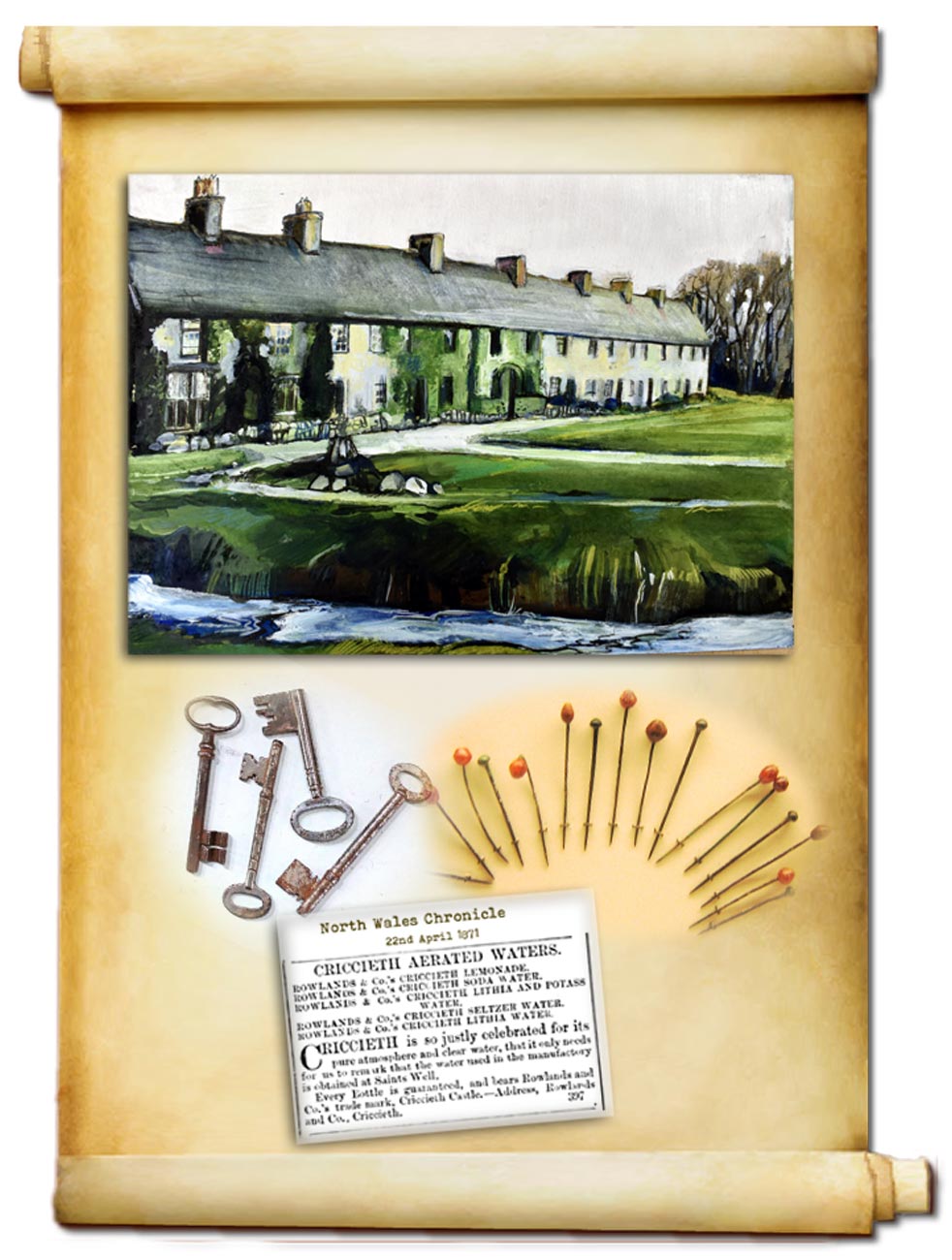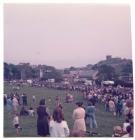Content can be downloaded for non-commercial purposes, such as for personal use or in educational resources.
For commercial purposes please contact the copyright holder directly.
Read more about the The Creative Archive Licence.
Description
CRICCIETH The Holy Well. On the Caernarfon Road, at the top of the Maes next to a small stream, is a small modern slate plaque engraved Ffynnon y Saint (Saints Well) that commemorates a Holy well in the vicinity. The precise location of the well is unknown. Local historian and antiquarian John Jones (Myrddin Fardd) writing in 1906 notes that it was already lost. He recorded that the well lay in the corner of a field sloping down from the church. This area is now built over and no trace of the well can be found. It appears that the stream divides and follows several routes. In 1827 Griffith Owen, of the Ymwlch Estate, built a row of small houses named Holywell Terrace and the stream can be seen between the end of the terrace and the main road. It then flows under the road and joins the River Cwrt. Another local historian, Dr Colin Gresham, in his classic book Eifionydd has the well marked on a map as being higher up the main road and indeed there is a pipe into a small well here known locally as Pistyll(spout). Yet another pipe empties into the
stream at the end of the terrace. This was reputedly a diversion to the end house where mineral water was made. Indeed, a works for making ginger beer and soda water was established close by in 1871. Myrddin Fardd notes that formerly it was the custom for local people to visit the well on Easter Sunday and to throw either keys or pins into the well to secure the patronage of the Saint, presumably Saint Catherine. The well was also noted for the cure of eye complaints. Greshams map shows a path from the area to St Catherines church 100 yards to the east. The path still exists but today follows a different route. There is much folklore regarding wells from all over the British Isles and abroad. Some stories go back into the mists of time to the pagan era to ceremonies involving dropping items into the well or leaving items around it. With the arrival of Christianity many were dedicated to a nearby church. Today, we can confidently say that there was a holy well but its exact whereabouts is uncertain. The best information we have is from the two authors named and it appears to have been behind Holywell Terrace, between Regent Garage and the church






Do you have information to add to this item? Please leave a comment
Comments (0)
You must be logged in to leave a comment